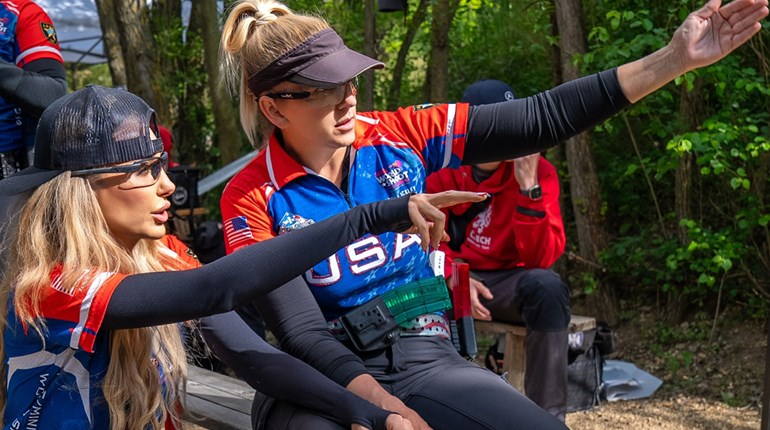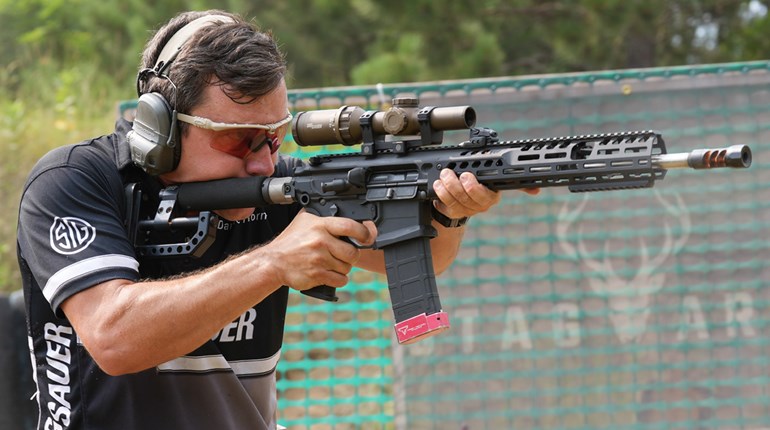
September is National Preparedness Month, and one of the ways many people prepare their home safety plan is by owning and maintaining a firearm. Two critical components of a firearm home safety plan are a stock of ammunition and swift access to the gun. We’re going to look at what you need to do in order to get your ammo ready to use in your firearms.
Organize
Aside from actually having the ammo, gun owners also must consider the best way to store and organize their ammunition. Of course, your storage system needs to keep ammo accessible and ready, but your system also depends on a number of safety factors. The age, skill level and knowledge of firearm safety of every member of your household, as well as whoever comes in and out, affects how and where you store your ammo. Certain states also have specific laws about storing ammo that you will also need to take into account.
At the Ready
Many home-defense guns are semi-automatic, meaning that the ammo feeds through a detachable magazine. Some gun owners store their magazines loaded but separate from the firearm as part of their safe ammo storage plan. This way, the gun is unloaded, but can be fully loaded at a moment’s notice.
New gun owners sometimes mistakenly call the magazine a “clip,” but clip is an often mis-used term. Clips are metal, and seen in firearms like an M1 Garand. Ammo that the military uses often comes on a “stripper clip,” which is then loaded into magazines. Ammo that comes on a clip is inserted into either the gun or magazine, but the clip doesn’t stay in the gun or magazine. This is unlike a magazine, which stays in the gun when you shoot.
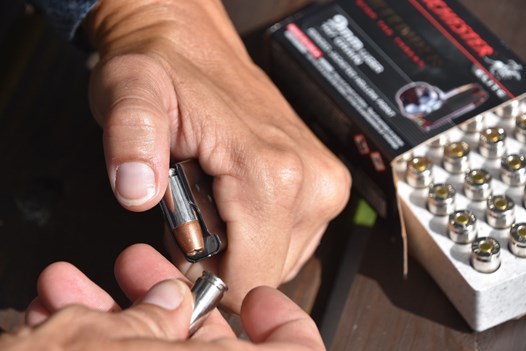
Loading a Pistol
For a semi-automatic pistol, ammunition is loaded into magazines. The magazine is inserted into the pistol, a round chambers and then the pistol is ready to shoot. If you have a revolver, you will need to open the cylinder, insert the rounds, and close the cylinder in order to shoot.
Whether you have a semi-automatic or a revolver, you need to know where your ammo is, how to get it into the gun and how to chamber a round. Understandably, someone who wants to be ready to defend their home would want to have magazines loaded and ready to use. In a home-defense scenario, you may not have time to find ammo, load a magazine and load the gun.
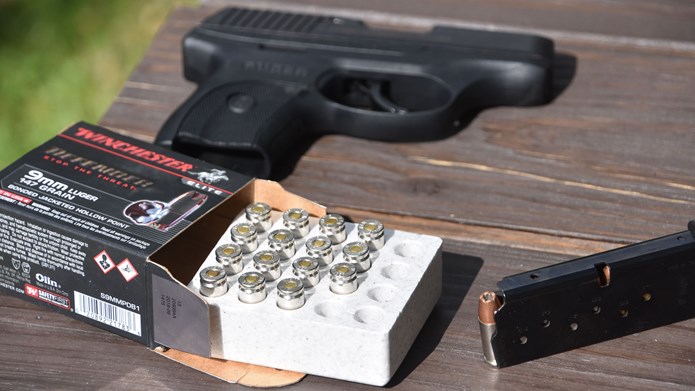
To load a pistol magazine, you depress the follower (usually plastic) by pushing a round down and sliding it into the magazine. You can buy a mag loader tool that makes this easier. This helps people with low hand strength depress the magazine spring that is underneath the follower. You fill the magazine with the appropriate number of rounds for your specific magazine. Over-filling a magazine is not a good idea, since it can cause a malfunction. Squeezing in that one extra round won’t help you in an emergency situation; it will simply hurt your firearm’s ability to function.
If your firearm is a revolver, your ammo may be loose, or put into metallic half-moon or full-moon clips. Most people do not own these accessories, as they are not required for your revolver to function. However, they can make reloading faster and keep your spare ammunition organized and ready, should you need to reload your revolver.
Keeping your magazines clean and free from dust, dirt and excess oil is a good habit. If you train outdoors and drop magazines on the ground, you will need to clean them regularly and make sure there is no dirt or sand in them. Grit inside the magazine can cause the follower to stick, and your magazine/gun to malfunction.
Loading a Rifle
Ammunition is also loaded into magazines in semi-automatic rifles. The magazine is inserted into the rifle, a round chambered, and the rifle is ready to shoot. If you have a bolt-action rifle, you will need to either load rounds into the internal magazine (e.g., a hunting rifle like a Mauser), or insert the magazine in the action (e.g., a Remington 700-type action).
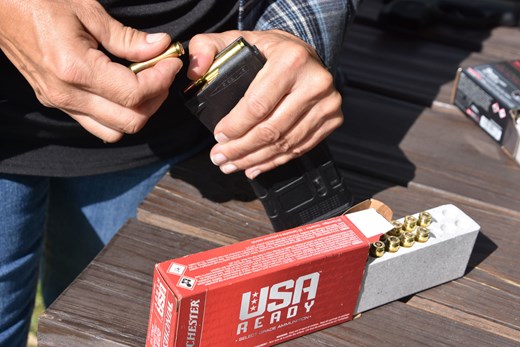
Rifle magazines function similarly to a pistol magazine. You need to keep them clean and in good working order. They have a spring and a follower. Some magazines are polymer (plastic), and some are metal. To load them, you depress the follower and slide a round into the mag, past what’s commonly referred to as the “feed lips.”
Rifle magazines can stay loaded for years, and still function correctly. Storing loaded magazines for your rifle in your “go bag” or range bag is a common practice. Again, you need to follow your local and state regulations on ammunition storage. But having more than a single magazine loaded and ready is sage preparedness planning.
Loading a Shotgun
Shotguns hold ammunition in the magazine tube. Once ammo is loaded into the tube, a round can be chambered, and the gun is ready to shoot. You can also insert a round into an open chamber and then load the tube, or top off your tube once you chamber a round. However you load the shotgun, your gun can hold the rounds that fit in the tube, plus the one in the chamber.
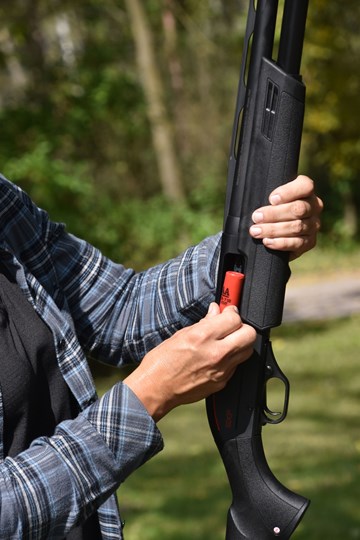
A pump shotgun differs from a semi-automatic shotgun in how it cycles. A semi-automatic uses captured gasses from firing the round (or inertia from the round) to cycle the gun. A pump shotgun requires that you “pump” or hand-cycle each round into/out of the chamber. However, both types of shotguns load the same way. The difference is that to open the chamber of a pump shotgun, you often need to depress a button on the receiver that allows you to open the action.
Most stock shotguns hold from 2 to 5 rounds in the tube, and another in the chamber. If you store your shotgun empty, this does not give you many rounds, and it requires that you know how to load quickly and chamber a round. If your shotgun for home defense is the same as your hunting shotgun, be sure to research your local and state laws on how many rounds your tube can hold, and return it to the legal requirement for hunting. For example, migratory bird hunting generally this is no more than 3 rounds in the shotgun).
The fact that a shotgun shell holds many small projectiles (or several large BBs in the case of buckshot) which will stop an intruder, but are less likely to penetrate interior walls, makes them a good choice for home-defense. But if they are empty and locked away, they are probably the most time-consuming to get loaded and into action.
If you choose a shotgun for home defense you will want to ask yourself some questions ... Can you store your firearm loaded? Can you store ammo with it in the safe? Should you do that, considering who has access to your safe? If you choose to use a shotgun for home-defense, make sure that you store it appropriately. If your local laws require that you store it unloaded, you may consider purchasing dummy rounds and having everyone who might need to use it learn how to load, unload and clear that shotgun! Knowing how to tell if a shotgun has rounds in the tube, and how to ensure the chamber is empty, can also be taught with dummy rounds.
Another facet of loading a shotgun is that they do not all have the same controls. Compared to an AR-style rifle, which is fairly universal, shotgun controls vary. Shotguns often have a button near the trigger to allow a shell to release from the magazine tube onto the lifter, which then allows you to pull the charging handle back and insert a round into the chamber. Some makes/models do not have this button. So knowing your shotgun is truly important.
If You Can’t Load, Stage
If your local or state laws require that you store ammo separately from firearms, plan on staging both. Here are some ideas and ways to get organized:
- Load magazines and store in appropriate locations.
- Store spare ammo where it will be helpful (e.g. your “go bag” locked in a safe or locked closet).
- Keep ammo labeled and arranged so it can be easily found.
- If your guns cannot be loaded, but ammo can be in the safe with your firearms, and that fits your home’s dynamic, store a magazine next to the gun it goes with. Consider a small biometric safe by your bedside with a gun and mag.
- Consider a small safe in your bedroom and a large safe for long guns. There are modular safes that can be brought into even small spaces and assembled once there.
Load Up and Be Confident
And lastly, consider the types of ammo that you load in your firearms. Home-defense loads are going to be a good choice for stopping power. But your biggest concern needs to be making sure that your firearm is ready and ammo is accessible. Besides proper storage, expert training to use your firearm is an essential safety step that will also increase your confidence in your ability to defend your family.
Once you have your home-defense guns, establish your home-defense plan and have some ammo loaded into magazines or appropriately staged, you will be more confident in your family’s preparedness. Knowing where your tools are is a key part of using them.
In the spirit of National Preparedness Month, I challenge all of you to make a safety plan and practice it with your family. For help creating the other aspects of your safety plan, besides home defense, check out my article Organizing Your Family For Emergencies.
About the Author: Becky Yackley competes in the shooting sports across the country and around the world with her husband and three sons. She has spent much of the last 20 years holding down the fort while her husband proudly serves our country in both the Marine Corps and state law enforcement. Her writing, blogging, and photography are ways that she shares her unique perspective on firearms, competition, hunting, and the Second Amendment, especially as it applies to mothers on their own. She grew up the daughter of a gunsmith, and with her siblings competed in NRA Highpower and Smallbore, and she has since competed in more disciplines than almost any woman involved in the shooting sports. From IPSC, USPSA, Bianchi Cup, 3 Gun and more, she enjoys sharing that to be proficient and knowledgeable with a firearm is within the reach of anyone! She’s the founder a 501c.3, 2A Heritage Ltd., and works with industry partners and other volunteers who share the ethos of bringing new youth into the shooting sports with personal commitment to safely sharing an historically American pastime.












